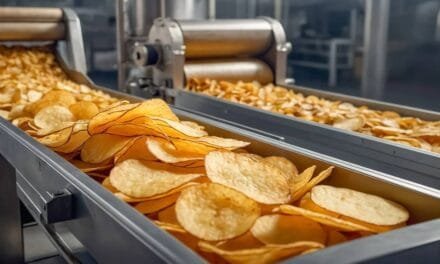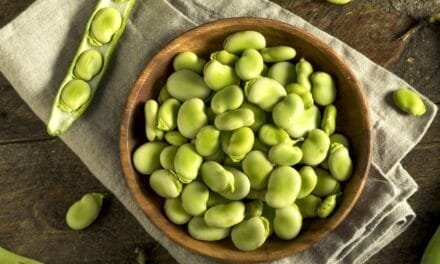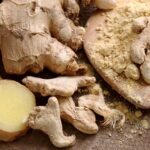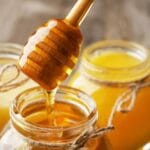Rural entrepreneurship through suitable agro processing models/complexes is essential to increase the income of the farmers, provide significant employment opportunities to the rural youth, and reduce the huge amount of post-harvest losses. Mohammed Shafiq Alam explains the processes and machinery involved in the agro processing of durable crops in this concluding part of the article.
Table of Contents
The durable crops like paddy, wheat, oilseeds, pulses, and turmeric if dried at proper moisture content can be stored safely more than 6 months encouraging the entrepreneurs for supplying the processed produce throughout the year. The process and machinery involved are discussed below:
Rice Milling
Rice is one of the oldest food crops and has been in cultivation in India since ancient times. Rice is of great antiquity and is closely bound within the life and dietary habits of the least human of people in India. Rice is a staple food for southeast Asian Countries which accounts for 75-80 percent of the total paddy production of about 600 million tons in the world. India produces about 125 million tones of paddy out of which Punjab is 14%.
Cleaned paddy, on average yields 22% husk, 6% bran and 72% rice. Paddy is milled into raw or parboiled rice and flaked rice. The total yield of rice seldom exceeds 65 percent within 20-30% brokens when milled as raw and 68% with 15-20% as parboiled paddy. Excessive breakage during rice milling in the conventional system reduces the total recovery of rice. Recent investigations have shown that it is possible to increase the total outturn of better quality rice by 10% with improved harvesting, parboiling, drying, and milling technologies.
Milling is a crucial step in the post-production of rice. The basic objective of a rice milling system is to remove the husk and the bran layers and produce an edible, white rice kernel that is sufficiently milled and free of impurities. Depending on the requirements of the customer, the rice should have a minimum of broken kernels.
It includes 5 major unit operations namely Cleaning, Shelling, Separation, Whitening/Polishing, and Grading. Milling of paddy is done at domestic/village and commercial levels. At the village level, it is done for own consumption and custom milling and at a commercial level, is for trade.
A rice milling system can be a simple one or two-step process, or a multi-stage process. In a one-step milling process, husk and bran removal are done in one pass and milled or white rice is produced directly out of paddy. In a two-step process, removing the husk and removing bran are done separately, and brown rice is produced as an intermediate product. In multistage milling, rice will undergo several different processing steps.
A commercial rice miller will have the following objectives:
- Produce edible rice that appeals to the customer – i.e. rice that is sufficiently milled and free of husks, stones, and other non-grain materials.
- Maximize the total milled rice recovery out of paddy and minimize grain breakage.
Rice Milling Machinery:
Steel Hullers:
Rice hullers are located in villages where they custom-mill for paddy producers. Their capacity range from 45-270 kg of paddy/hr. It is powered by an electric motor, diesel engine or tractor. One of the most popular rice mills is steel huller. It combines the de-husking and polishing processes into one operation. Hullers are manufactured in most of the rice-producing countries and are available in different sizes, capacities and horsepower requirements. It has a larger horsepower requirement per tonne of milled paddy than other types of rice mills. It also has a lower recovery rate in total rice and head rice, primarily because of the high rate of breakage and the loss of small brokens with the bran and husk. It is operated at 800-900 rpm.
Mini Rice Mills:
In such machines shelling is done with rubber rollers, husk is separated by aspiration and bran is removed by friction polishers. These mills are available in various sizes and capacities namely 250-500 kg/hr. Efficiency and the modern principle of operation reduce the horsepower requirement to about one-half that of rice hullers. Its milling recovery rates are considerably better, yields 3-5% more total rice with 15-20% fewer brokens. The bran and husk are separated as more useful by-products.
The machine has a simple design and is fairly easy to manufacture and operate. It can be powered by an electric motor, diesel engine or a tractor. It is a little more sophisticated than huller and has a higher initial cost. However, the increased cost is offset by the lower power requirement and operating cost and increased rice outturn.
Modern Rice Mills:
These rice mills use a different machine for each processing step i.e. cleaning, shelling, separating, bran removal and grading. Bucket elevators are used to move the grain from one machine to the next. The standard sizes of modern mills are 2 t/h and 4 t/hr. Larger capacity machines are also available.
Wheat Flour Milling
Small Scale Wheat Milling
Milling of wheat at a small scale level mainly consists of grinding of cleaned whole wheat in a simple atta chakki. This atta chakki consists of two stone discs out of which one is stationary and the other is rotated at about 500 rpm. The whole wheat is fed in the space between these two discs and is ground by impact and shearing action. The atta is obtained from the periphery of these discs.
Some times upper bran layer of wheat is removed upto some extent with the help of a scrubber locally known as rullah before grinding. The wheat flour thus obtained is sieved to remove the remaining. In this way, the colour of the atta is much whiter as compared to the whole wheat atta. The grain of wheat consists of the outer layer termed as bran comprising 12% of the grain, a germ attached to the lower end of grain which is about 3% and finally the endosperm comprising of 85 percent of the whole grain from which the flour is derived.
The purpose of flour milling is to first separate the endosperm from bran and germ in large pieces as possible and then reduce the size of these endosperm particles to flour size particles through a series of milling steps. Most of the wheat mills obtain 70 per cent yield of flour from a theoretical yield of about 85 per cent. The by-products of milling the germ, shorts and bran together comprise about 30 per cent.
Modern Wheat Milling Process
The wheat milling milling process consists of the following five steps:
- Reception and storage of wheat
- Cleaning of wheat
- Tempering and conditioning
- Milling into flour and by-products
- Storage of finished products.
Reception and Storage of Wheat:
Wheat selection is important to flour millers. If the wheat is not sound, dry, un-sprouted and free from insect contamination, the miller is powerless to produce an adequate product. In general, the millers receive wheat by road in trucks. The incoming wheat is weighed, sampled and analyzed to check moisture, variety, foreign matters and protein content etc. Wheat is stored at the mill in large concrete bins. Before storage wheat undergoes pre-cleaning and drying to remove the large impurities and foreign material and to remove excess moisture, if any so that the wheat can be stored safely.
Cleaning of Wheat:
Wheat is passed through a vibratory cleaner first to remove sticks, sand, dust, and light impurities as wheat stuff is removed by the air current. After this, the wheat is passed over magnet separators to remove weed seeds, other seeds, etc. The next step in cleaning is to remove the dust from the surface of the wheat by a machine called scourer. Usually is moved by paddles against emery coated surface and the dirt emery and lose outer coatings are aspirated off. In some of the mills, wheat cleaning/washing of wheat is also practiced but it has been replaced largely by dry cleaning/scouring due to the problem of water pollution.
Tempering and Conditioning of Wheat:
Conditioning or tempering is the controlled addition of moisture to wheat to achieve the following objectives:
- To toughen the skin so that it will resist powdering during the wheat milling process (powdered bran cannot be separated from flour at any stage during the milling process).
- To facilitate the physical separation of endosperm from the bran.
- To mellow the endosperm so that it may be easily reduced to flour.
- To ensure that all material leaving the grinding rolls are in optimum conditions for sifting.
Processing of Oilseeds
Oilseeds constitute the second-largest agricultural commodity next only to food grains. After the introduction of sunflower in Punjab in 1989, rapeseed-mustard and sunflower have become the major oilseeds that contribute more than 90 per cent of the oilseed production from over 85 per cent of the area under oilseeds. Several varieties of toria (TLC-1, TL-15), raya (RLM-514, RLM-619), taramira (TMLC-2), gobi sarson (GSL-1) and sunflower (MSFH-8, Mega-363, PSFH-67) are commonly grown in the India. Besides, cottonseed and rice bran are also a rich source of oil.
Some limited information on the economics of sunflower cultivation and processing has indicated that if the processing of oilseeds is also done by the farmers, the net returns of the farmers shall approximately be thrice the profits obtained from the production alone.
Several methods are employed to obtain oil from oilseeds like ghanis, kohlus, expellers, and solvent extraction. Ghani and kohlus essentially are batch operations and are less efficient whereas solvent extraction is a capital-intensive and energy-intensive process. For the continuous type of oil extraction equipment, expeller is a widely accepted machine. The expellers are available in a wide range of sizes and capacities. Several manufacturers of oil expellers and spares are concentrated in Ludhiana.
One of the standard attachments with an expeller is a steam kettle which is used for pre-conditioning (or cooking) some of the heavy seeds like cottonseed. An initial moisture content around 9-14 per cent gives good results. The steam pressure is kept around 6-9 kg per sq. cm and the resultant temperature in the kettle should be around 80-90°C. A low-pressure baby boiler will be required if steam is used in the mill.
The baby boiler does not require a trained attendant or a license.
The crushing chamber of the expeller constitutes three sections and is made up of steel bars that are clamped together. The individual bars in the chamber are separated by bar spacing clips. The specific spacing is dependent upon the type of oilseeds being processed. Usually, the material is passed thrice through the chamber to get maximum possible oil. Roughly stated, 8-9 percent of oil remains in the oilcake in the case of a small oil expeller. Sunflower seed can be decorticated before crushing which leaves less impurity in the oil. The un-decorticated seed results in darker oil and requires more refining.
The oil obtained from the expeller is allowed to settle for about 24 hours and then siphoned off from the top. Further clarification can be achieved using a matching filter press. For a 4 tonnes/day mill, an 18-plate filter press (45×45 cm) can serve the purpose. This would cost another Rs. 25,000. The filtered oil can further be refined in a vessel (called refinery) using sodium hydroxide. But, it need not be employed for a farm-level oil mill. It is recommended that the baby oil expeller of capacity 60 kg/hr may be installed along with other food processing machines.
Pulse Processing
Pulse Processing at the Small Scale Level
Providing value addition to the agricultural produce is an important factor to usher in rural prosperity. Post-harvest processing either primary or final helps in reducing the losses and adds value to the produce. Processing helps in conservation of the produce and by-products from qualitative and quantitative damages, enables value addition to bring additional income and employment generation to the farmers through farm produce.
Efforts are being made to diversify the agriculture in Punjab, mainly due to the depleting water table and pollution caused by the wheat – paddy rotation. Plans have been initiated to cut down the area under paddy crop and raise the area under cultivation of maize, pulses and cotton. At present, the area under pulses is 98 thousand hectares with a total production of about 80 thousand metric tons (Source: agro-processing-centres-economically-viable-venture). Out of the total area under pulses, the major part is under the summer moong. Other pulses include desi gram, field pea, mash, etc.
As far as the marketing of pulses is concerned, there is no such minimum support price as in the case of wheat and paddy. Although there is spurt in prices of pulses, farmers seldom get this benefit. Here comes the need of processing of pulses. Post-harvest operations may include cleaning, grading and packaging and milling (de-husking, splitting of pulses, etc.). Generally, the farmer ignores these operations and sells the produce directly in the market, depriving him/ her benefits of value addition.
Sometimes these operations are done by labour or farm women using improper equipment resulting in a poor end product and lot of drudgery. There is a need to strengthen the farm level primary and secondary processing of pulses. The machinery for such processing operations includes cleaner/grader, specific gravity separators, destoners, and pulse mills. As the pulse milling processing industry as almost non-existent in Punjab, there is a very good scope for setting up of such industry.
Primary Processing of Pulses:
The cultivation of summer moong beans is popular among the farmers after wheat and paddy. The area under this crop is increasing continuously. The income of the moon growers can be enhanced if the primary processing is done at the farm itself. The primary processing operations include cleaning, grading, drying, and packaging.
Drying of Pulses:
After harvesting, the moong beans should be dried on the pucca floor or on a black polythene sheet in a thin layer. Care should be taken that in the evening, the grains should be collected on the sheet and on the next day; it should be again spread for drying. Drying should be continued until the moisture content reaches to 10-11%.
Cleaning and Grading:
It is very important to remove all the impurities from dried moong beans otherwise there are chances of spoilage of grains during storage. The light undesirable particles such as dust, straw, leaves, etc. can be removed with a cleaner attached with a fan or with a manual siever (Chhajj). Similarly broken and shriveled grains can be separated with sieves or with a mechanical cleaner cum grader available in the market. This grader cost about Rs. 35000/- and can clean and grade 125 kg/ hr. This machine can be easily managed by the farmer himself.
Storage of Pulses:
Moong beans should be stored in an airtight metal or plastic bins. The bins should be properly cleaned before using them. Pulses are mainly damaged by dhora during storage. There is a very simple technique to avoid this loss. For this, only properly cleaned and dried grains should be stored. The bin should not be filled completely. A 6-7 cm layer of dried sand or ash should be put over the grains. Then the bin should be made completely airtight. With this technique, the produce can be stored for a longer duration without using any chemical or insecticide. This requires little investment and moisture content of the grains also does not rise.
Packaging and Marketing of Pulses:
By using the above method, stored moong beans should be taken out only when there is favourable price. For further value addition, produce can be packaged in one kg polythene bags. For packaging, heat sealing machines available in the market can be used. Such packaged produce can be directly sold to the consumers, retailers or wholesalers. This helps in increasing the income of the farmers.
Secondary Processing of Pulses:
Secondary processing or milling of pulses means dehusking and splitting of graded pulses. Pulses are usually converted into Dhal by dehusking and splitting. Both dry and wet milling processes are employed. By and large carborundum emery rollers are used for dehusking and burr grinders for splitting. Basic processes in dhal milling are cleaning, dehusking, splitting, separation and bagging. Major variation is involved with the dehusking process only. Moong is difficult to dehusk due to which repeated operations by dehusking rollers are required.
Rewetting and drying is done to loosen portions of husk sticking after repeated rolling. The removal of the outer husk and splitting the grain into two equal halves is known as milling of pulses. To facilitate dehusking and splitting of pulses alternate wetting and drying method is used. In India, milling methods produce dehusked split pulses. Loosening of husk by conditioning is insufficient in traditional methods. To obtain complete dehusking of the grains a large number of abrasive force is applied in this case, as a result, high losses occur in the form of brokens and powder. Yield of split & pulses in traditional mills are only 65 to 75% due to the above losses compared to 82 to 85% potential yield.
Technical knowledge is required for secondary milling of pulses. Pretreatments with water and oil are very important for getting the maximum yield of dal. Modern dal mills developed by CFTRI, Mysore, IIPR, Kanpur etc. are available with a cost of up to Rs. 1,50,000/- Turmeric processing of at small scale level Turmeric has been cultivated in India since ancient times. The crop commonly known as Haldi is grown for its rhizomes which are used as a spice in many culinary preparations. Other uses are in the drug and cosmetic industry. On average, this crop yields about 60-80 quintals of fresh rhizomes per acre.
Thus, APCs can generate a platform to process the raw produce with ensured good quality finished product and are technically feasible and economically viable units. The entrepreneurs who had already installed the APC with our guidance, running it successfully and are fetching good financial capital with a monthly profit of approx. Rs 0.50 to 1.00 lacs apart from employing 2-5 persons. Rural India has a lot of potential for installing similar units as a replica of APC’s installed in Punjab.
‘Processed Food Industry’: The Voice of Food Processing Industry
Processed Food Industry (PFI) is a premier English-language monthly B2B publication (ISSN 09721649) headquartered in New Delhi, catering to the vibrant and ever-evolving food processing industry. While we don’t claim to be the largest or most widely read, our proud legacy of over 27 years—publishing continuously since 1997—has earned us the trust of industry professionals as a reliable source of insights and information.
If your goal is to tap into the booming Indian and South Asian markets to promote your equipment, technology, software, or consumables, PFI is your strategic partner. With our hybrid approach across print, web, and social media, we help you establish strong brand recognition rooted in market relevance. Backed by a team of top-tier technical writers, we’re ready to work closely with you and your customers to craft compelling content that drives results.
India and South Asia’s food industry is expanding rapidly, driven by efficiency and cutting-edge innovations. Don’t miss the opportunity to elevate your brand and engage with this dynamic market. Get our 2025 media kit to fine-tune your marketing strategy, increase your visibility, and convert potential customers into valuable conversations. Additionally, ask for a sample copy of our monthly magazine and experience the quality and relevance we deliver.
Let us help you define your role in the future of the food processing industry.
Have a news or topic to share with industry? Write to us editorial@pfionline.com

















